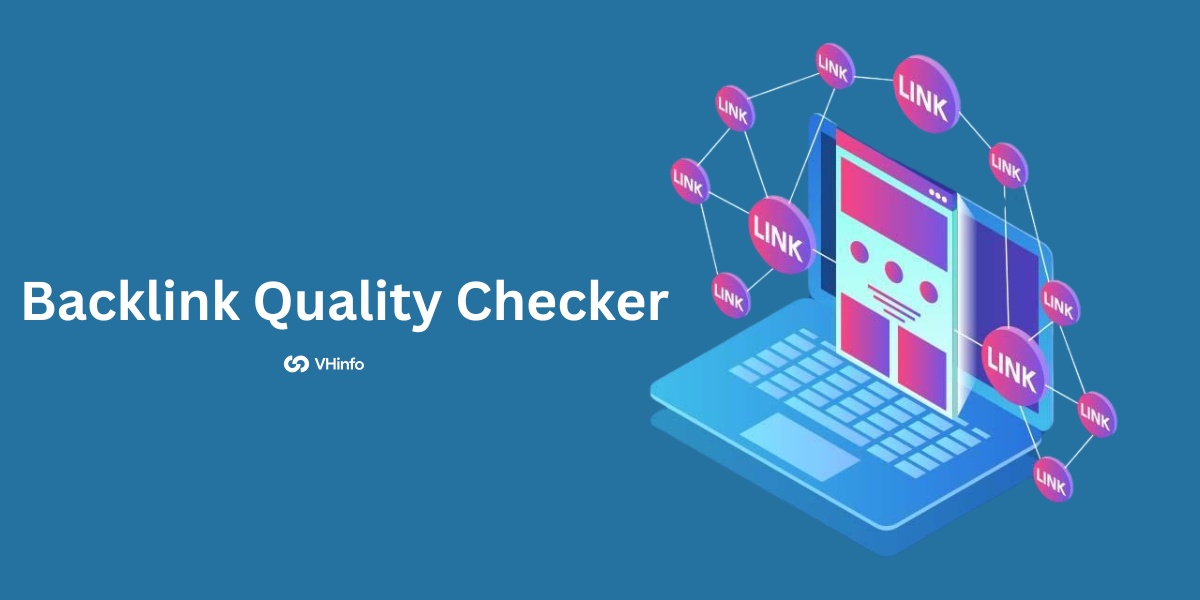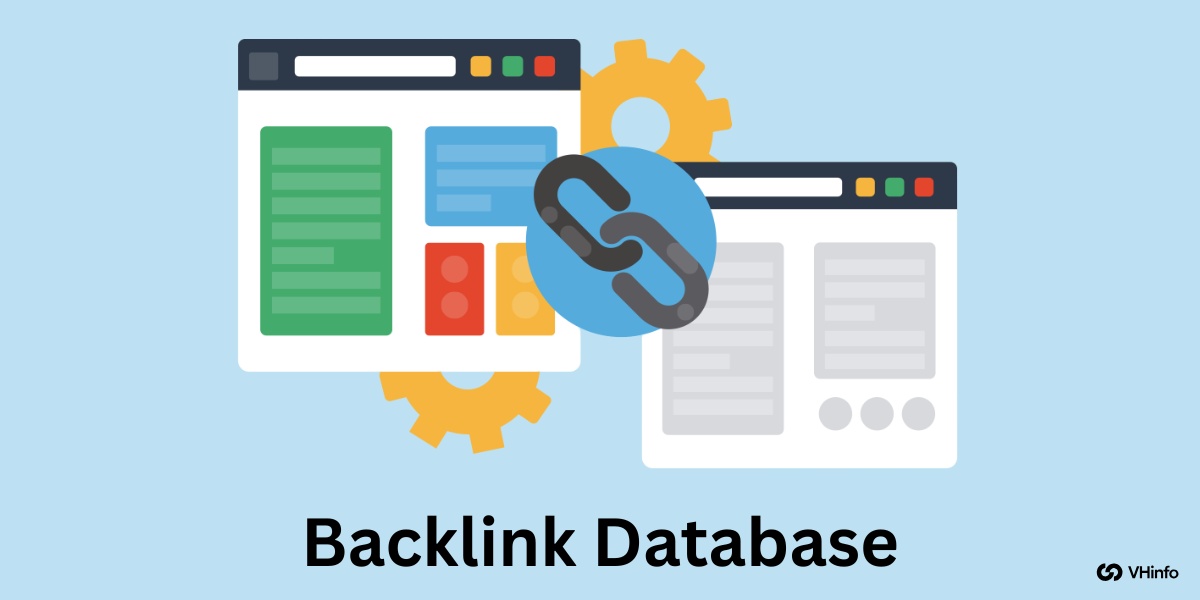In the competitive SaaS industry, understanding your audience is pivotal to creating impactful marketing strategies. A well-defined SaaS buyer persona acts as a compass, guiding your marketing, sales, and product development efforts.
This article delves into the concept of buyer personas, their importance, and actionable steps to create and utilize them effectively for your SaaS business.
What Are SaaS Buyer Personas?

A SaaS buyer persona is a semi-fictional representation of your ideal customer, built using data such as demographics, behavior, goals, and challenges. Unlike general buyer personas, SaaS personas often account for multiple stakeholders in the buying process—decision-makers like CTOs, end-users, and influencers within organizations. These personas help SaaS companies tailor their marketing strategies, improve the sales process, and align their product development with customer needs.
Importance of Buyer Personas in SaaS

Buyer personas are indispensable for SaaS companies because they:
- Provide insights into customer pain points, enabling tailored solutions.
- Improve conversion rates by aligning marketing messages with audience needs.
- Help segment the target audience for personalized campaigns.
- Enhance collaboration between the sales team and marketing team.
- Guide product teams in developing features that resonate with real users.
How Are Buyer Personas Different For SaaS Companies?

Buyer personas in SaaS differ due to the industry’s unique characteristics:
- Multiple Decision-Makers: The buying process often involves roles like the Chief Technology Officer (CTO) or Chief Marketing Officer (CMO).
- Recurring Revenue Model: Understanding long-term customer needs is important for retention.
- Complex Buying Journey: SaaS buyers evaluate features, pricing models, and support extensively before committing. Given the complex buying journey in SaaS, businesses often require targeted strategies to reach decision-makers effectively. Using a SaaS Link Building Service can help improve search visibility and attract relevant stakeholders during their extensive evaluation process.
How Can a SaaS Business Create a Buyer’s Persona?
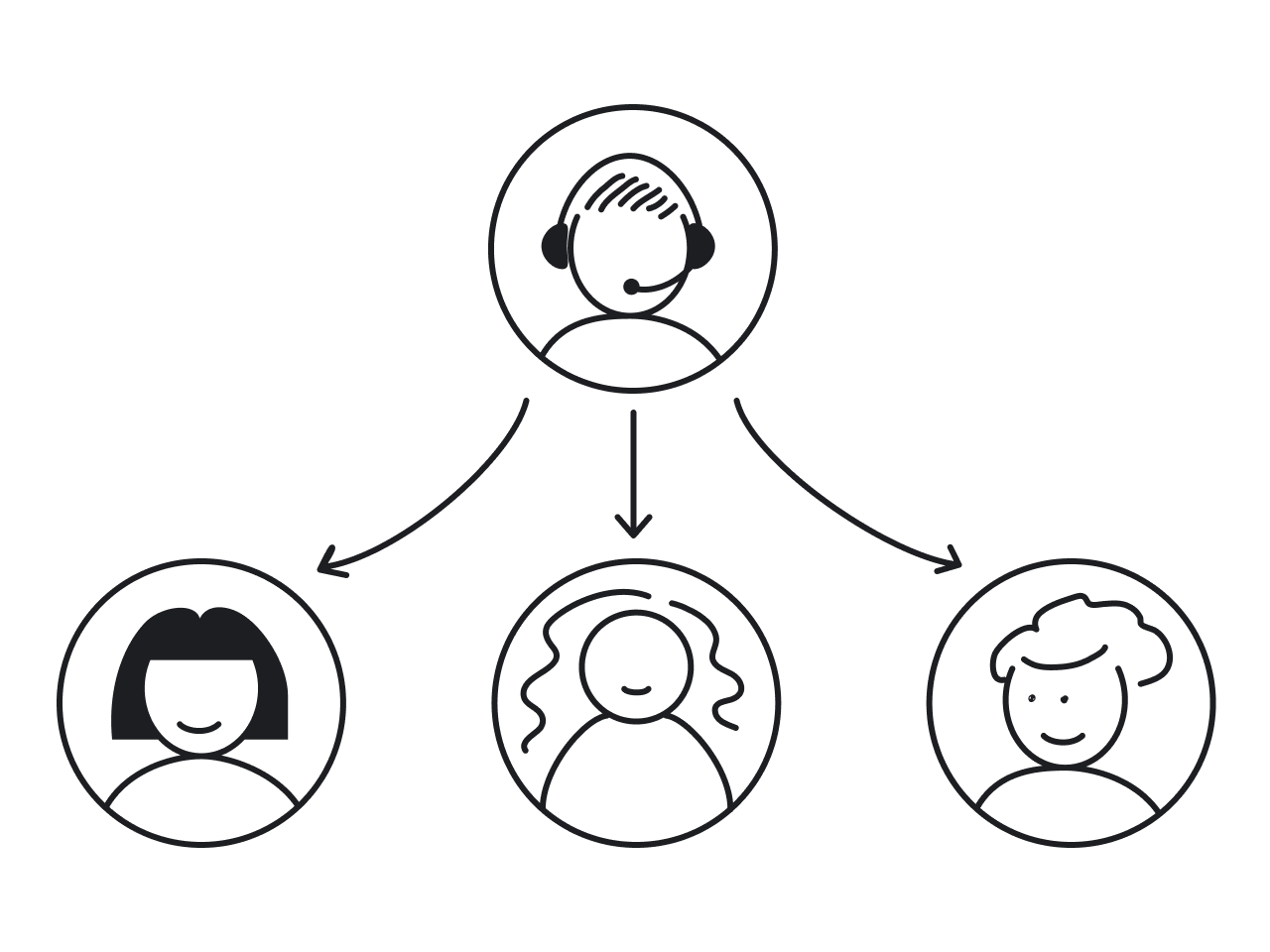
Creating a SaaS buyer persona involves understanding your ideal customer deeply. Two critical steps in this process are conducting customer interviews and assessing the price sensitivity of personas.
Conducting Customer Interviews
Customer interviews are one of the most effective ways to gather insights about your potential customers. These interviews allow you to hear directly from real people about their goals, challenges, and expectations when using a SaaS product.
Here’s how to approach it:
- Ask Open-Ended Questions: Focus on their pain points, desired features, and how they evaluate solutions during their buying process.
- Involve Multiple Teams: Your sales team, customer service reps, and even product managers can help identify recurring themes from customer feedback.
- Capture Behavioral Insights: Understand how customers interact with your product or similar tools in the market.
- Use Data for Persona Profiles: Combine interview insights with user data from surveys or analytics to create detailed profiles that reflect real customer needs. For startups aiming to refine their buyer personas and improve their online visibility, using resources like SEO for Startup can help attract the right audience and gather actionable insights during customer interviews.
For example, if you’re targeting a social media management software audience, interviews can reveal specific challenges like managing multiple social media networks or optimizing social media posts. This information helps build personas that align with your marketing strategies.
Price Sensitivity of Personas
Price sensitivity refers to how much a customer’s purchasing decision is influenced by the cost of your SaaS product. This is important because different personas have varying budgets and perceptions of value.
Here’s what to keep in mind:
- Understand Market Segments: Some personas, like a price-sensitive startup founder, may prioritize affordability, while others, like a Chief Technology Officer (CTO), may focus on advanced features over cost.
- Use Pricing Models: Tools like the Price Sensitivity Meter (PSM) or Price Laddering can help you test different price points and understand how changes in pricing affect demand.
- Tailor Pricing Strategies: For highly price-sensitive personas, offering options like a free trial or tiered pricing can make your solution more appealing. On the other hand, less price-sensitive personas might respond better to premium plans with added value propositions.
- Avoid One-Size-Fits-All Pricing: Each persona sees your product differently—what’s affordable for one might be too expensive for another. Segmenting your audience ensures pricing aligns with their expectations.
For instance, if you’re targeting small businesses, understanding their budget constraints can help you design pricing that feels like the best solution without compromising on perceived value.
By combining insights from customer interviews and price sensitivity analysis, SaaS companies can create actionable buyer personas that guide everything from digital marketing campaigns to product development.
These steps ensure you’re addressing the unique needs of each audience segment while maximizing revenue potential.
How to Create Effective SaaS Buyer Personas?
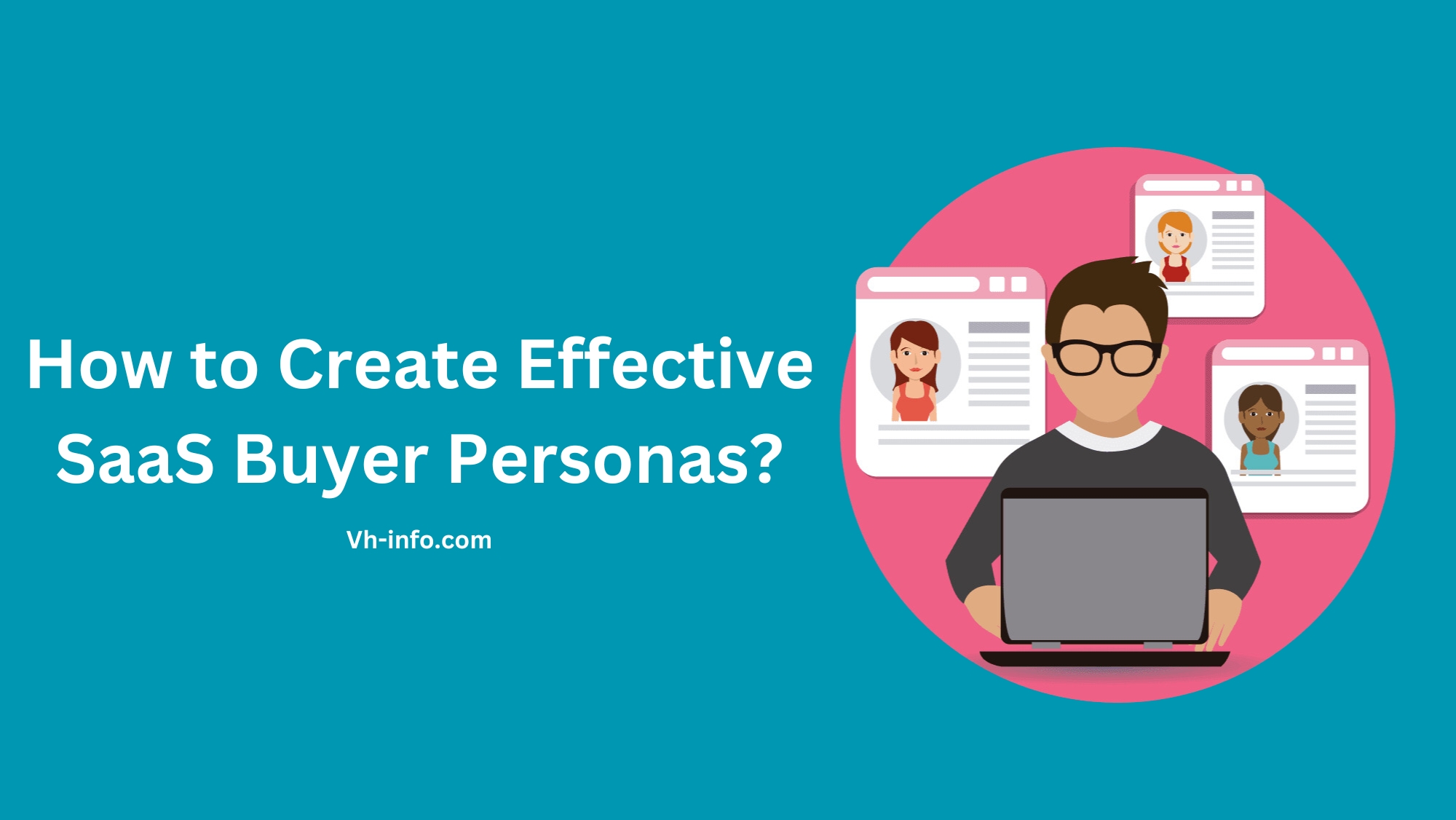
Creating effective SaaS buyer personas is essential for tailoring your marketing strategies, improving the sales process, and aligning your product development with customer needs.
Identifying Target Audience
The first step is to define who your ideal customer is. Start by analyzing your target market and understanding the specific needs of potential customers.
Use tools like Google Analytics, CRM platforms, or social media insights to gather data on demographics, behaviors, and preferences.
For example, a SaaS company offering social media management software might target small businesses or marketing teams looking to streamline their social media posts.
By identifying the right audience segments, you can focus on those who are a good fit for your SaaS product.
Conducting Market Research
Market research helps you uncover valuable insights about your audience and competitors. Use surveys, focus groups, and interviews to gather qualitative data about customer pain points and expectations.
Additionally, analyze industry reports and trends to understand where your product fits within the SaaS industry.
For instance, if you’re targeting chief marketing officers or product managers, research their challenges with current tools and highlight how your solution addresses these gaps.
Combining primary (direct feedback) and secondary (existing reports) research ensures a well-rounded understanding of your audience.
Analyzing Customer Data
Customer data provides actionable insights into user behavior and preferences. Look at patterns such as feature usage, login frequency, or feedback from support tickets.
For example, if your SaaS platform offers a free trial, analyze how users interact with it—what features they use most or where they drop off.
This data helps refine your understanding of audience segments and informs decisions about marketing messages, pricing models, or feature prioritization. Tools like HubSpot or Salesforce can help in tracking and analyzing such data effectively.
Developing Persona Profiles
Once you’ve gathered all the information, it’s time to create detailed profiles for each persona.
Assign relatable names like “Tech-Savvy CTO” or “Budget-Conscious Startup Founder” to humanize them. Include details such as job roles, company size, goals, challenges, and preferred communication channels (e.g., email marketing or social media networks).
For example, a persona for a growth-focused marketing director might emphasize their need for analytics tools that enhance campaign performance. These profiles act as guides for tailoring your marketing content, sales pitches, and even product features.
By following these steps—identifying your audience, conducting thorough research, analyzing user data, and building detailed profiles—you can create effective buyer personas that drive better engagement and conversion rates for your SaaS business.
Things to Remember When Creating a Buyer Persona
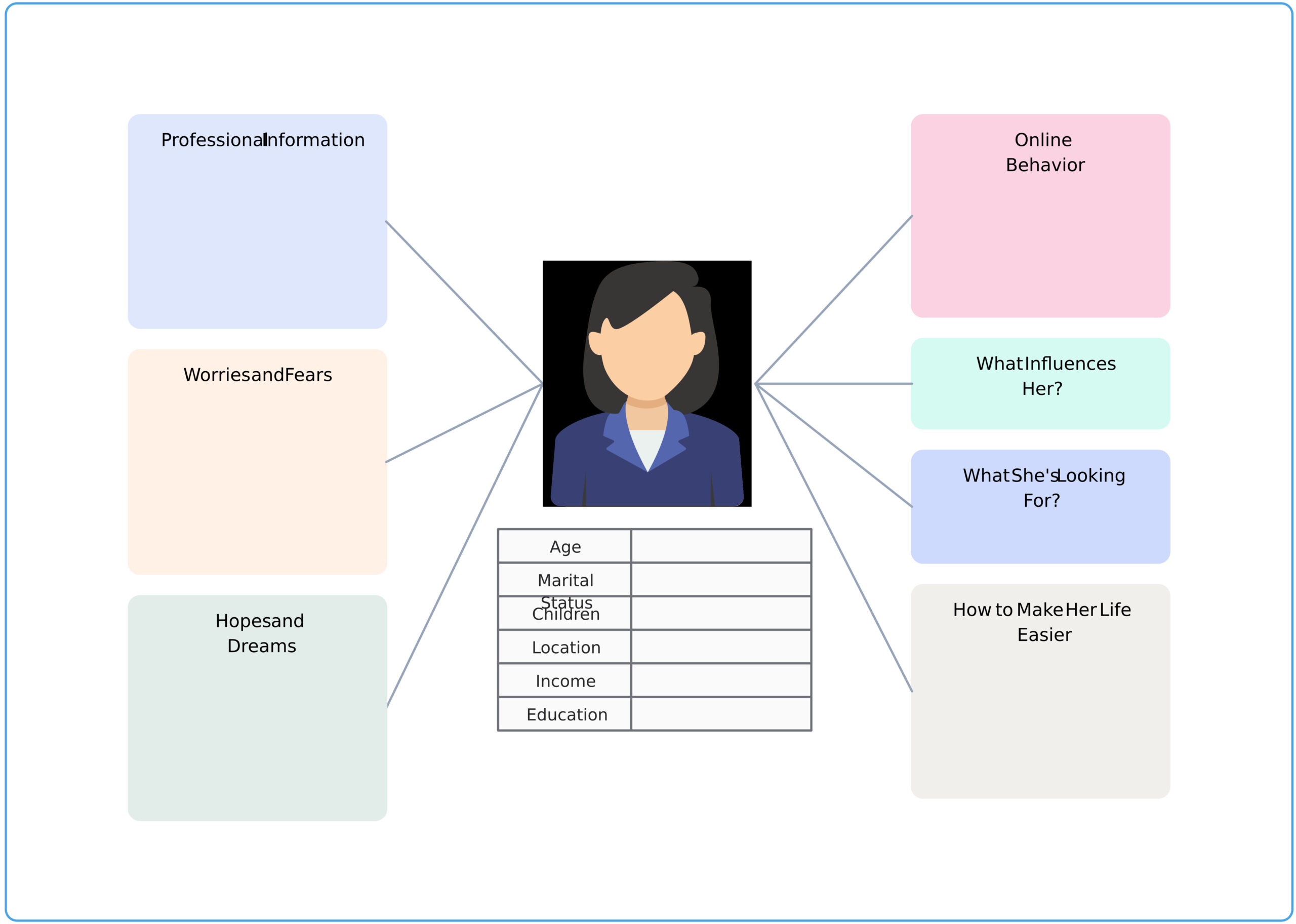
Creating a buyer persona requires careful consideration of various factors to ensure it accurately represents your target audience. Here are four essential points to keep in mind, which are as follows:
- Keep Demographics in Mind: Demographics are the foundation of any buyer persona. They include details like age, location, income, gender, and company size. For example, knowing whether your potential customers are small business owners or enterprise-level executives helps tailor your marketing strategies. Demographics also reveal purchasing power and preferences, enabling you to create targeted marketing messages that resonate with specific audience segments.
- Consider Their Goals and Objectives: Understanding what your ideal customer wants to achieve is key to creating a persona. For instance, a chief marketing officer might aim to increase brand awareness or improve campaign performance, while a social media manager might focus on managing multiple social media networks. Align your SaaS product with these goals to position it as the best solution. This ensures your product development and messaging address their objectives effectively.
- Understand Their Pain Points: Pain points are the challenges or problems your audience faces. Identifying these helps you highlight how your product solves their issues. For example, if your audience struggles with managing customer data or automating workflows, emphasize how your SaaS tool simplifies these tasks. Collaborate with teams like customer service or sales to gather insights into common complaints and frustrations during the buyer’s journey.
- Think About Their Buying Process: Mapping out the buying process helps you understand how customers make decisions. Consider questions like: Do they consult reviews? Are they influenced by free trials or case studies? For example, a busy VP of Sales might look for quick demos or testimonials to make faster decisions. Understanding these steps allows you to create tailored strategies for each stage of the funnel—from awareness (ToFu) to decision-making (BoFu). By focusing on demographics, goals, pain points, and the buying process, you can create specific buyer personas that guide your marketing efforts, improve conversion rates, and enhance the overall customer experience.
How to Use Buyer Personas For SaaS Products?

Using buyer personas effectively allows SaaS companies to refine their marketing strategies, improve the sales process, and create products that resonate with their target audience.
Here’s how you can use them across different areas:
- Targeting: Buyer personas help SaaS companies pinpoint the right audience segments for their campaigns. By understanding the demographics, behaviors, and preferences of your ideal customer profile, you can focus your efforts on those most likely to benefit from your SaaS product. For example, a persona like “Tech-Savvy CTO” might guide you to target enterprise-level decision-makers through LinkedIn ads or industry-specific forums.
- Personalization: Personas enable tailored marketing messages that speak directly to the needs and goals of your audience. For instance, if a persona values cost-effectiveness, you can highlight pricing benefits like a free trial. Personalization extends to email marketing, social media posts, and landing pages, ensuring that each touchpoint feels relevant and engaging for your potential customers.
- Engagement and Conversion: By aligning content and campaigns with specific personas, you can boost engagement and improve conversion rates. For example, if your persona is a busy VP of Sales, create concise case studies or testimonials that address their pain points quickly. This approach ensures your content resonates with their needs during their buying process.
- Customer Lifetime Value (CLV): Buyer personas help identify strategies to maximize the customer lifetime value. For instance, offering upsells or cross-sells based on persona-specific needs can enhance retention. If a persona values ongoing support, focus on providing exceptional onboarding and regular updates. CLV-focused personas also guide pricing models to ensure long-term profitability.
- Pricing: Personas play a critical role in shaping pricing strategies. For price-sensitive personas like small businesses or startups, consider tiered pricing or discounts. On the other hand, enterprise-level personas may prioritize advanced features over cost, allowing you to offer premium plans with added value propositions.
- Design: Your SaaS platform’s design should reflect the preferences of your personas. A persona like “The Hands-On CEO” might appreciate a clean, intuitive interface with detailed analytics dashboards. Including persona insights into design ensures a better customer experience and reduces churn rates.
Adopting a Full-Funnel Approach (ToFu, MoFu, BoFu)
Personas guide content creation for every stage of the funnel:
- ToFu (Top of Funnel): Create blog posts or social media content addressing general pain points to attract new leads.
- MoFu (Middle of Funnel): Share detailed case studies or webinars tailored to personas evaluating solutions.
- BoFu (Bottom of Funnel): Offer free trials or personalized demos to help personas make final decisions.
Common Mistakes to Avoid With Your Buyer Persona
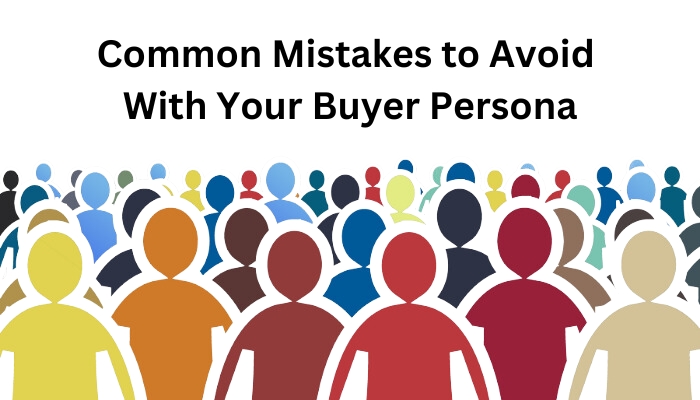
When creating buyer personas, it’s easy to fall into traps that lead to inaccurate or ineffective profiles. Below are common mistakes explained, along with how to avoid them:
Relying Solely On Assumptions
Building personas based on guesses or stereotypes instead of real customer data is a major mistake.
For example, assuming all small businesses prioritize cost without conducting customer interviews can lead to flawed personas. Instead, use data from surveys, focus groups, and analytics to ensure your personas reflect actual behaviors and needs, not just gut feelings.
Over Generalizing
Creating overly broad personas dilutes their usefulness. For instance, grouping all social media managers into one persona ignores the unique challenges faced by those managing different social media networks.
To avoid this, segment your target audience based on specific pain points, goals, and industries for more precise targeting.
Creating Too Many Personas
Having too many personas can overwhelm your marketing team and confuse your messaging.
For example, trying to cater to 10 different personas might dilute your efforts. Focus on 2-3 key personas that represent your ideal customer profile. You can always expand later if needed.
Not Involving Cross-Functional Teams
Personas created in isolation by the marketing team often miss valuable insights from other departments like sales or customer service.
For example, sales reps may know more about objections during the sales process, while support teams understand customer pain points better. Collaborate across teams to create well-rounded personas.
Lacking Empathy
If your personas lack empathy, they may feel like lifeless profiles instead of representations of real people.
For example, focusing only on demographics like age or income misses deeper insights into their motivations and struggles. Include psychographics such as values and pain points to make your personas relatable and actionable.
Being Too Static
A persona that isn’t updated regularly becomes outdated as markets evolve.
For instance, if you created a persona before new technologies like AI tools became popular in the SaaS industry, it might no longer reflect current customer needs. Revisit and refine your personas periodically using fresh user data,
Ignoring Negative Personas
Focusing only on ideal customers while ignoring negative personas—those who aren’t a good fit for your product—can waste resources.
For example, targeting users who want free solutions when your product is premium-priced leads to poor ROI. Identifying these “bad fits” helps you avoid spending time and money on unqualified leads.
By avoiding these mistakes—such as relying on assumptions, overgeneralizing, or failing to update—you can create accurate and effective buyer persona profiles.
These profiles will better guide your marketing strategies, improve the sales process, and help you connect with the right target customers.
Tips to Create and Effectively Target Buyer Personas For Your SaaS Business
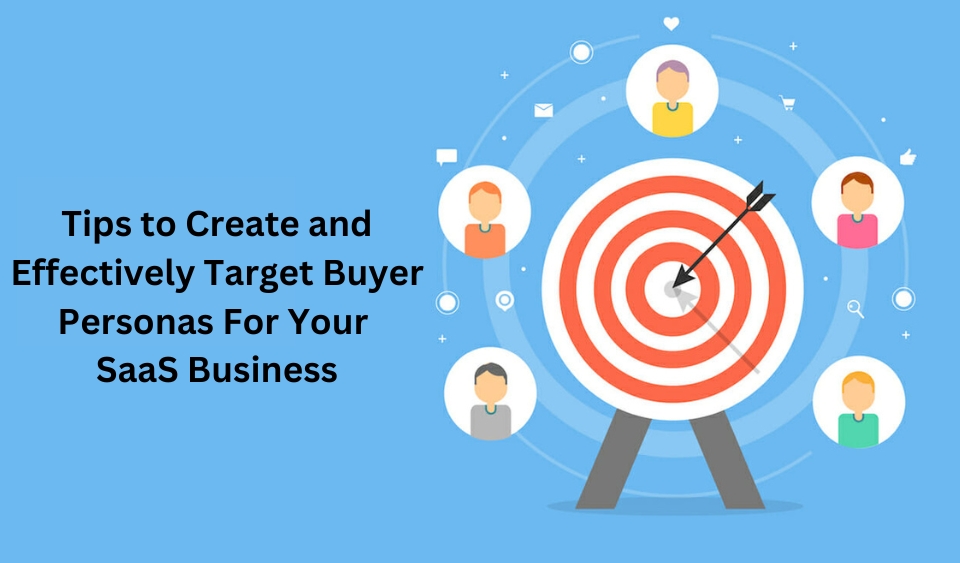
Creating and targeting SaaS buyer personas effectively requires a structured approach that combines research, data analysis, and continuous refinement.
Here’s a breakdown of key steps:
Conduct In-Depth Research to Identify Your Target Audience
Start by gathering as much information as possible about your target audience. Use tools like Google Analytics, Facebook Audience Insights, or customer feedback to understand their demographics, behaviors, and challenges.
For example, if you’re targeting small businesses, research their pain points, such as limited budgets or the need for automation tools. This research helps you identify who your ideal customer profile is and what they need from your SaaS product.
Analyze The Data (Audience Segmentation)
Once you’ve collected data, segment your audience into smaller groups based on shared characteristics like company size, industry, or behavior.
For instance, you might find that chief marketing officers prefer detailed analytics tools, while social media managers look for easy-to-use scheduling features.
By segmenting your audience, you can tailor marketing messages and product features to address specific needs more effectively.
Create SaaS Buyer Personas
After segmenting your audience, create detailed buyer persona profiles for each group.
Give them relatable names like “The Growth-Focused Marketing Director” or “The Price-Sensitive Startup Founder.” Include details such as their goals, pain points, preferred communication channels (e.g., email marketing), and decision-making process.
These personas help you create personalized strategies that resonate with real people rather than generic groups.
Focus Your Ad Campaigns With Targeted Messaging and Retargeting Tools
Use the insights from your buyer personas to create highly targeted ad campaigns.
For example, if one persona values affordability, emphasize discounts or a free trial in your ads. Retargeting tools can help re-engage users who visited your website but didn’t convert. Tailoring campaigns to specific personas ensures higher engagement and better conversion rates.
Nurture Personas With Relevant Offers and Updates
Keep your personas engaged by offering them value over time. Share relevant updates, case studies, or special offers based on their needs.
For example, if a persona values new technologies, provide early access to beta features of your software. This approach builds trust and improves the overall customer experience, increasing loyalty and retention.
Refine Your SaaS Buyer Personas Over Time
Buyer personas aren’t static—they need to evolve as market trends and customer needs change. Regularly review customer data from surveys, feedback forms, or analytics to update your personas.
For instance, if a new competitor enters the market or customer pain points shift due to technological advancements, adjust your personas accordingly to stay relevant in the competitive SaaS industry.
By conducting thorough research, segmenting audiences effectively, creating detailed profiles, and continuously refining them over time, SaaS companies can better align their marketing efforts, improve their sales process, and deliver solutions that truly resonate with their target customers.
Buyer Persona Examples For SaaS Startups
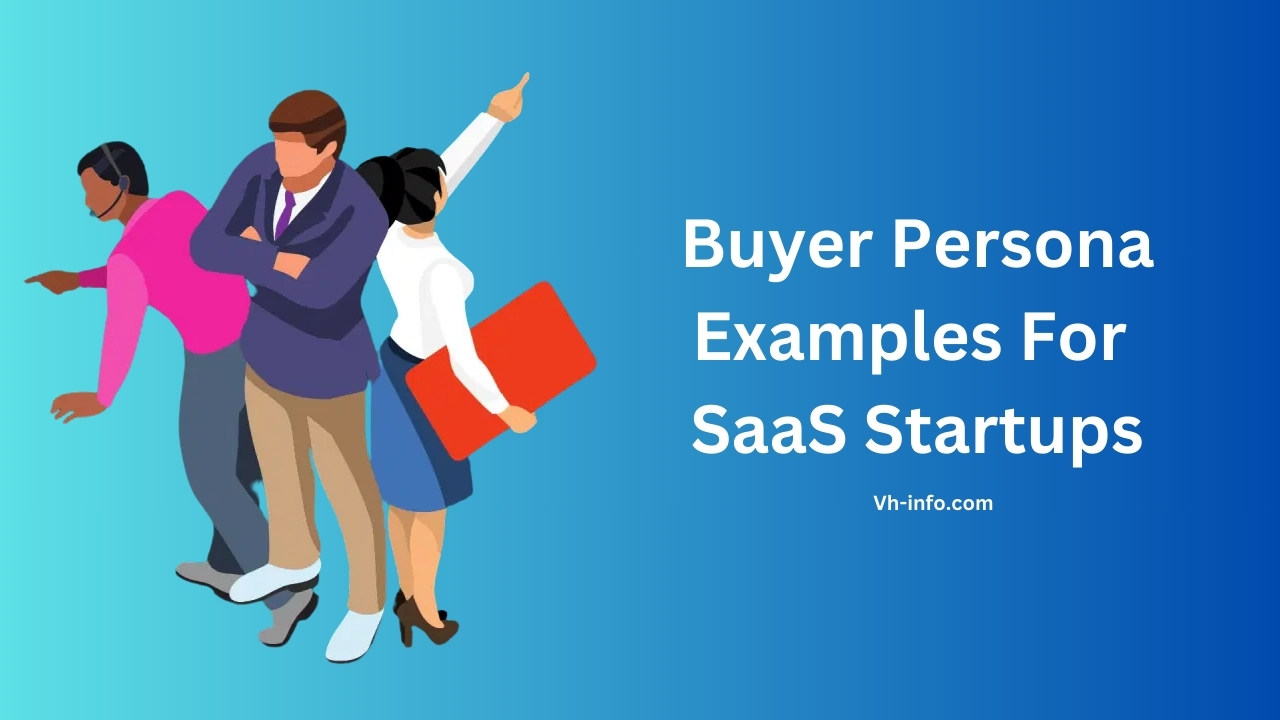
Creating clear buyer personas is essential for SaaS startups to understand their target audience, align their marketing strategies, and create products that solve real problems.
Below are five examples of SaaS buyer personas:
The Price-Sensitive Startup Founder
This persona represents small business founders or entrepreneurs who are highly budget-conscious. They are often looking for a SaaS product that offers maximum value at a minimal cost.
For example, they might prioritize features like a free trial or affordable pricing tiers over advanced functionalities. Their main goal is to manage costs while scaling their business, making them a good fit for tools that offer flexibility and scalability without breaking the bank.
The Tech-Savvy CTO
The Chief Technology Officer (CTO) is a decision-maker with deep technical expertise.
This persona values innovation, security, and scalability in a SaaS product. They are likely to evaluate your tool based on its ability to integrate with existing systems and support long-term growth.
For instance, a tech-savvy CTO might look for cutting-edge features or robust APIs in tools like social media management software. Their focus is on aligning technology with the company’s strategic goals while ensuring it meets technical standards.
The Busy VP of Sales
The VP of Sales is focused on driving revenue, meeting quotas, and improving the performance of their sales team. This persona values tools that can streamline the sales process, such as CRM software or lead generation platforms.
They are often short on time and prefer solutions that provide quick, tangible results—like dashboards showing real-time pipeline health or automated follow-ups.
Highlighting how your product improves efficiency and boosts conversion rates will resonate strongly with this persona.
The Hands-On CEO
This persona represents CEOs who are deeply involved in every aspect of their business, from strategy to execution. They want tools that give them direct control and valuable insights into operations, making them ideal users of analytics platforms or project management tools.
A hands-on CEO is likely to value clear reporting features, easy-to-use dashboards, and seamless collaboration across teams like marketing, sales, and customer service. They rely on data-driven decisions to grow their business efficiently.
The Growth-Focused Marketing Director
This persona is responsible for generating leads, driving sales, and enhancing brand awareness. They are always on the lookout for new technologies that can optimize marketing campaigns or improve audience targeting.
For example, a growth-focused marketing director might prioritize tools that offer advanced audience segmentation or support multi-channel campaigns across email marketing and social media networks.
Their goal is to maximize ROI by aligning marketing efforts with customer needs. These examples illustrate how different personas have unique goals, challenges, and preferences when it comes to adopting SaaS solutions.
By tailoring your marketing messages, pricing models, and product features to these personas, you can better address their needs and position your SaaS startup as the best solution.
FAQ’s:
What is a B2B Buyer Persona?
A B2B buyer persona is a detailed profile of your ideal customer in a business-to-business context. It includes information like job roles, company size, industry, goals, and challenges of key decision-makers or influencers within an organization.
For SaaS companies, these personas help tailor marketing strategies to address the specific needs of stakeholders like Chief Technology Officers or VPs of Sales, enabling more personalized and effective communication.
Should I Consider Demographics and Psychographics When Creating a Buyer Persona?
Yes, both are essential. Demographics provide basic details like age, location, income, and job role, while psychographics delve into values, interests, and motivations.
For example, knowing that your ideal customer is a 35-year-old product manager who values efficiency and innovation helps you align your marketing messages with their priorities.
Combining these insights ensures your personas reflect both who your customers are and why they make purchasing decisions.
What Are Key Questions to Ask Prospects When Creating a SaaS Buyer Persona?
When creating a SaaS buyer persona, ask questions like:
- What are your main goals or challenges at work?
- How do you evaluate new tools or software?
- What features or benefits matter most to you? These questions help uncover customer pain points, decision-making processes, and preferences for tools like social media management software or CRMs. Use this information to refine your personas and align your product with their needs
Should I Conduct Surveys Or Call My Customers?
Both methods are valuable. Surveys provide quantitative insights from a large group, while customer calls offer qualitative depth by uncovering personal experiences and pain points.
For instance, a survey might reveal that many customers value automation, while calls can explain why it’s critical for their workflow. Combining both approaches ensures you gather comprehensive data for creating accurate buyer persona profiles.
How Often Should I Update the Created Personas?
You should update your buyer personas every 6 to 12 months or whenever there are significant changes in customer behavior, market trends, or product offerings.
For example, if new technologies emerge in the SaaS industry, revisit your personas to ensure they remain relevant. Regular updates keep your marketing strategies aligned with evolving customer needs and preferences.
These FAQs highlight the importance of creating detailed and dynamic personas to improve targeting, personalization, and overall customer engagement in the SaaS space.
Conclusion
Creating effective SaaS buyer personas is a critical step in ensuring your marketing strategies, sales process, and product development align with the needs of your target audience.
Focusing on real data through customer interviews, market research, and user data analysis helps you build detailed profiles that reflect the goals, pain points, and preferences of your ideal customers.
These personas help SaaS companies personalize their marketing messages, improve conversion rates, and enhance the overall customer experience. Avoiding common mistakes like overgeneralizing or relying on assumptions ensures your personas remain accurate and actionable.
Additionally, regularly updating your personas keeps them relevant amidst evolving market trends and customer behaviors.
With well-created personas, SaaS startups can effectively target their audience, nurture relationships, and position their solutions as the best fit in a competitive market.

